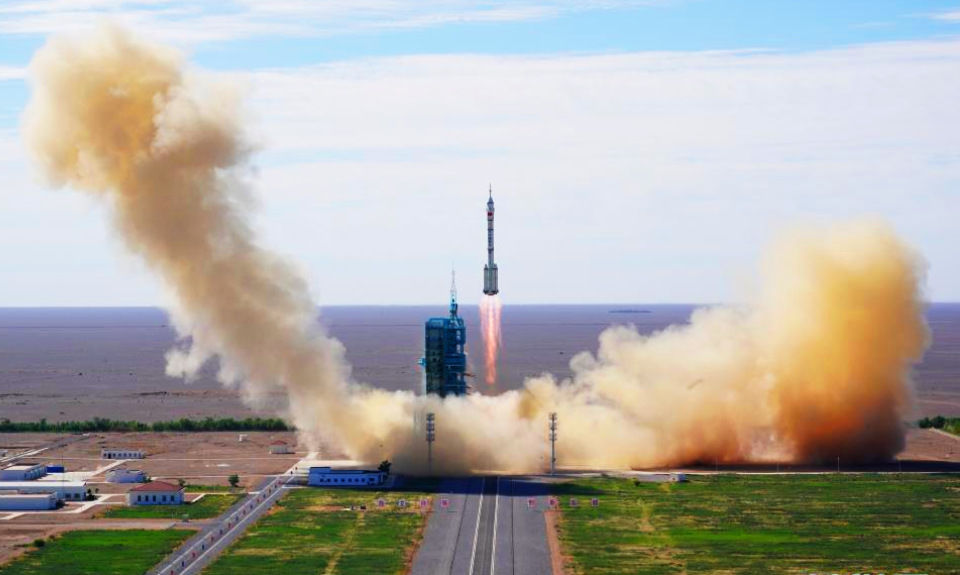What’s Nanjing Students’ Role in Safety of Chinese Astronauts?

Shenzhou 12 lifted off this morning from the Jiuquan satellite launch centre at 09:22. Image courtesy Xinhua
When a mighty Chinese rocket launched earlier today, the three astronauts aboard had many tasks ahead. Among them, while they spend 3 months in space, is delivering data for experiments developed by students and professors in Nanjing.
China’s Shenzhou 12 spacecraft performed a successful lift off this morning, 17 June, at 09:22, destination the core module of China’s independently-developed space station, the Tianhe.
The three astronauts, Commander Nie Haisheng, accompanied by Liu Boming and Tang Hongbo, are crewing China’s longest crewed space mission to date. And that’s where Nanjing University of Aeronautics and Astronautics (NUAA) comes in.
Spaceflight-Associated Neuro-ocular Syndrome (SANS) is a condition affecting the vision of about two thirds of astronauts on the International Space Station (ISS). If China is to succeed in her ambitions for a space station, so too is the health and safety of astronauts throughout their missions paramount.
According to Nature.com, the clinical manifestations of SANS include “unilateral and bilateral optic disc edema, globe flattening, choroidal and retinal folds, hyperopic refractive error shifts and focal areas of ischemic retina (a.ka. cotton wool spots)”.
Associate Professor of the Institute of Materials and Technology at NUAA, Feng Jundong, heads up a group focusing on the effects of radiation and weightlessness. In particular, the group researches such effects on the brains and vision of astronauts, reported Nanjing Daily.
In their space-based experiment, the team will be able to detect the brain functions of astronauts in orbit and evaluate their health status in the space station environment.
To do this, bioelectric signal analysis is combined with morphological and molecular biology research methods. Such key indicators aid in the development of SANS early-diagnosis technology, which it is hoped will lead to the prevention and treatment of the syndrome.
Also at NUAA, another research group is providing support for the safety of astronauts as to the high doses of radiation that they might encounter in long-duration space missions.
Led by Professor Wei Zhiyong, the group has taken radiation data from previous missions and used computer modelling to create a digital body mimicking a Chinese astronaut. They can then evaluate the risks to astronauts posed by both external and internal radiation sources and put forward protection measures.
But before all this work can take place in space and on the ground here in Nanjing, the three astronauts have a more pressing matter to address, namely hunger. Their first duties in the Tianhe will be unpacking food and other advance supplies still in the robotic freighter, Tianzhou, which docked with module last month.
(Source:thenanjinger.com)


